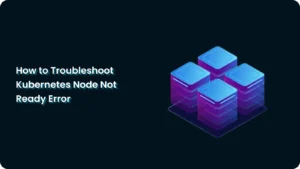The Hidden Costs of Fragmented DevOps Tools

As a DevOps engineer who has grappled with the challenges of piecing together fragmented tools and scripts, I’ve come to recognize the hidden costs and complexities that often
As a DevOps engineer who has grappled with the challenges of piecing together fragmented tools and scripts, I’ve come to recognize the hidden costs and complexities that often accompany this approach. While the allure of free and open-source software (FOSS) is undeniable, the long-term implications can be significant. Let me share some real-world examples of these hidden costs that I and my team have encountered:
Integration Nightmares
We once spent weeks trying to integrate our CI/CD pipeline with a new security scanning tool. What seemed like a simple task turned into a complex project due to incompatible APIs and conflicting dependencies. This not only delayed our release but also consumed valuable developer time that could have been spent on feature development.
Maintenance Burden
Our team maintained a custom-built deployment script that worked well for years. However, as our infrastructure grew, so did the script’s complexity. We found ourselves spending hours each week updating and troubleshooting this script, taking away time from more strategic initiatives.
Knowledge Silos
When our lead DevOps engineer left the company, we realized how dependent we were on his expertise with our homegrown monitoring system. It took us months to fully understand and effectively manage the system he had built, leading to several critical incidents during the transition period.
Scalability Limitations
We initially chose a popular open-source log management tool for its simplicity. However, as our application’s user base grew, we hit severe performance issues. We had to invest significant time and resources into migrating to a more scalable solution, causing disruptions to our operations.
Security Risks
Our team once discovered a critical vulnerability in one of our containerization tools. Because we were using an outdated version across multiple projects, we had to scramble to update and test all affected systems, leading to unplanned downtime and potential security exposures.
Lack of Standardization
In our organization, different teams used their preferred CI/CD tools. This lack of standardization made it challenging to onboard new team members and share best practices across projects. We spent considerable time creating and maintaining separate documentation for each tool set.
Hidden Learning Curves
When we decided to adopt Kubernetes, we underestimated the learning curve. What we thought would take a month to implement ended up taking a quarter, delaying several key projects and requiring extensive training for our team.
Limited Support Options
We once faced a critical issue with our open-source message queue system during a major product launch. Without professional support, we spent days scouring forums and GitHub issues for a solution, significantly impacting our launch timeline.
Feature Gaps
Our team relied on a popular open-source monitoring tool that lacked advanced alerting capabilities. We ended up building a custom alerting system on top of it, which required ongoing maintenance and updates, diverting resources from core development tasks.
Compliance Challenges
When preparing for a SOC 2 audit, we realized our fragmented toolchain made it difficult to demonstrate consistent access controls and audit trails across our entire infrastructure. We had to invest in additional tools and processes to meet compliance requirements, adding unexpected costs and complexity to our operations.These experiences have taught us the importance of carefully evaluating our toolchain and considering the long-term implications of our choices. While open-source and custom solutions have their place, we’ve learned to balance them with integrated platforms that can reduce these hidden costs and improve our overall efficiency.
Introducing NudgeBee: A Day-2 Ops & Optimization Platform for Cloud Native Clusters
NudgeBee addresses the challenges of fragmented DevOps tools by offering a single, integrated platform for managing Day-2 operations in cloud native clusters. Here’s how NudgeBee stands out:
- Comprehensive Troubleshooting: Correlates data from various sources to provide quick, actionable insights for issue resolution.
- Intelligent Optimization: Analyzes system performance and suggests optimizations across your entire infrastructure.
- Automated Workflows: Implements automation for routine tasks, reducing manual effort and human error.
- Integrated Security Scanning: Continuously scans for vulnerabilities and compliance issues, providing a holistic view of your security posture.
- Version Management: Simplifies cluster version management with automated updates and rollback capabilities.
- Ticketing Integration: Seamlessly integrates with popular ticketing systems, streamlining communication and issue tracking.
- Developer Tool Integration: Connects with common developer tools, bridging the gap between development and operations.
By offering these features in a unified platform, NudgeBee eliminates the need for multiple point solutions, reducing complexity and hidden costs associated with fragmented tooling. This integrated approach allows DevOps teams to focus on delivering value rather than managing a complex toolchain, ultimately leading to faster innovation and improved operational efficiency.
As we continue to navigate the complex landscape of DevOps tools and practices, it’s crucial to consider the long-term implications of our choices. While FOSS tools have their place, an integrated platform like NudgeBee can provide a more sustainable, scalable, and cost-effective solution for managing Day-2 operations in cloud native clusters. By addressing the hidden costs and challenges of fragmented tooling, we can streamline our workflows, improve collaboration, and focus on what really matters: delivering value to our users and customers.





